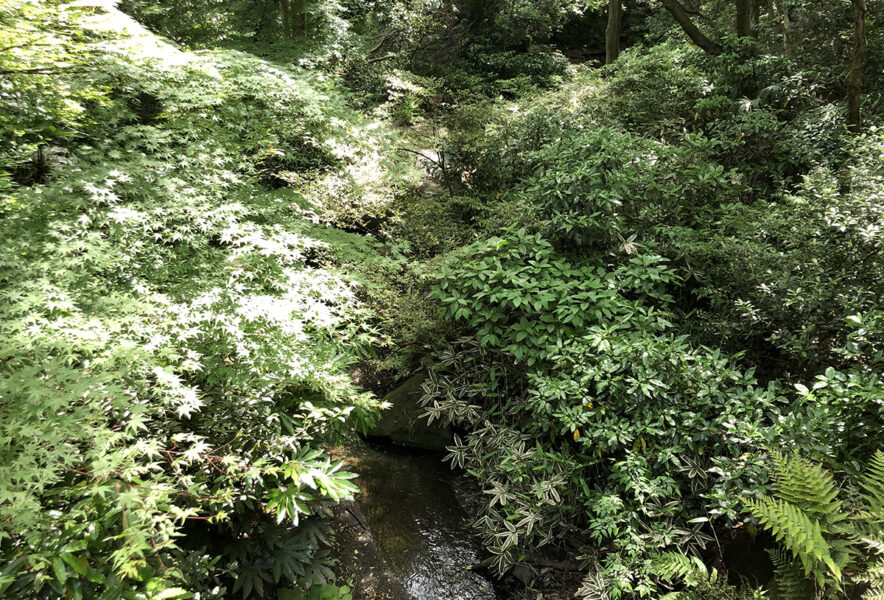Meiji Jingu Shrine is one of Japan’s shrines with a vast expanse of forest (70 hectares) in the middle of the huge city of Tokyo. Stepping into the precincts of the shrine, you will forget that you are in a bustling downtown area and encounter a traditional Japanese landscape surrounded by greenery. Let us introduce you to Meiji Jingu, a forest in the heart of the city.

What is Meiji Jingu Shrine?
Meiji Jingu was established in 1920 to commemorate the virtues of Emperor Meiji and Emperor Shoken, who led the creation of the foundations of modern Japan. Leading scholars gathered and planned to create an “eternal forest” where people could pray in silence in honor of Emperor Meiji and Empress Dowager Shoken.
A total of 110,000 young men and women worked tirelessly in the construction work, planting trees and building paths to create the Meiji Shrine.
In 1952, the Koishikawa Korakuen Garden was designated as a Special Historic Site and a Special Place of Scenic Beauty under the Law for Protection of Cultural Properties. The Koishikawa Korakuen Garden is one of only two gardens in Tokyo and nine gardens in Japan that have been designated as such, making it a valuable garden not only in Tokyo, but also throughout the country.
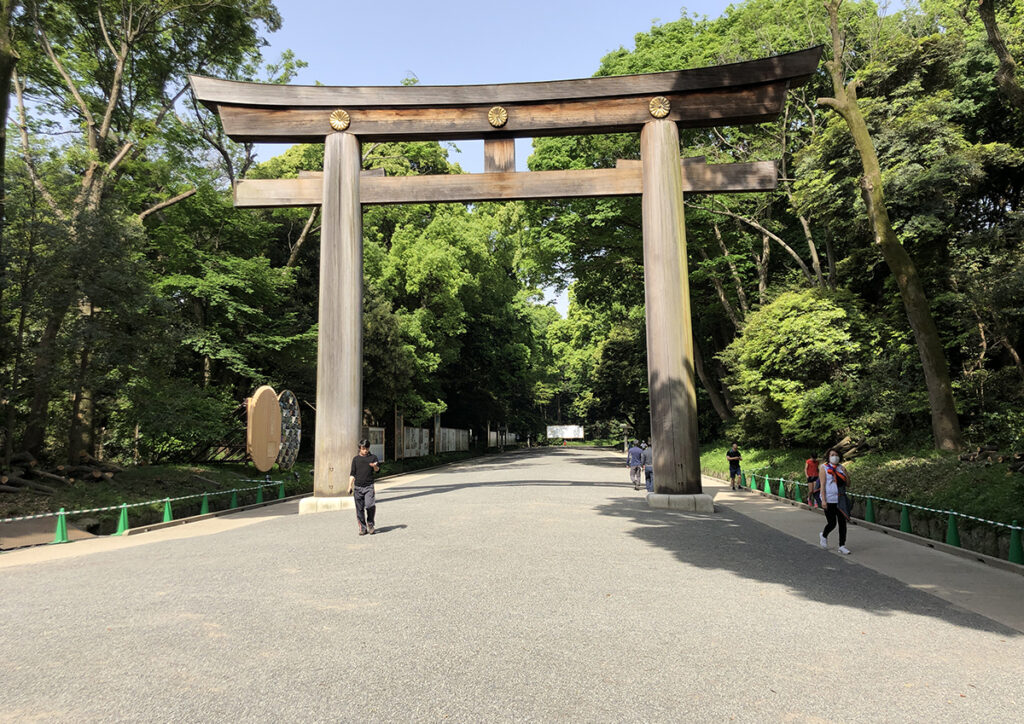
Highlights of Meiji Jingu Shrine
Meiji Jingu Shrine opens at sunrise and closes at sunset. The following is an introduction to the grounds of Meiji Jingu Shrine.
Jingu Bridge and Gorin Bridge
Jingu Bridge is a bridge for heading to the Meiji Shrine and was built during the construction of the Meiji Shrine in 1920 (Taisho 9).
The Olympic Bridge, which crosses next to the Jingu Bridge, was built in 1964 (Showa 38), when the Tokyo Olympics were held, as a means of transportation to the newly constructed Yoyogi National Stadium, the main venue for swimming.
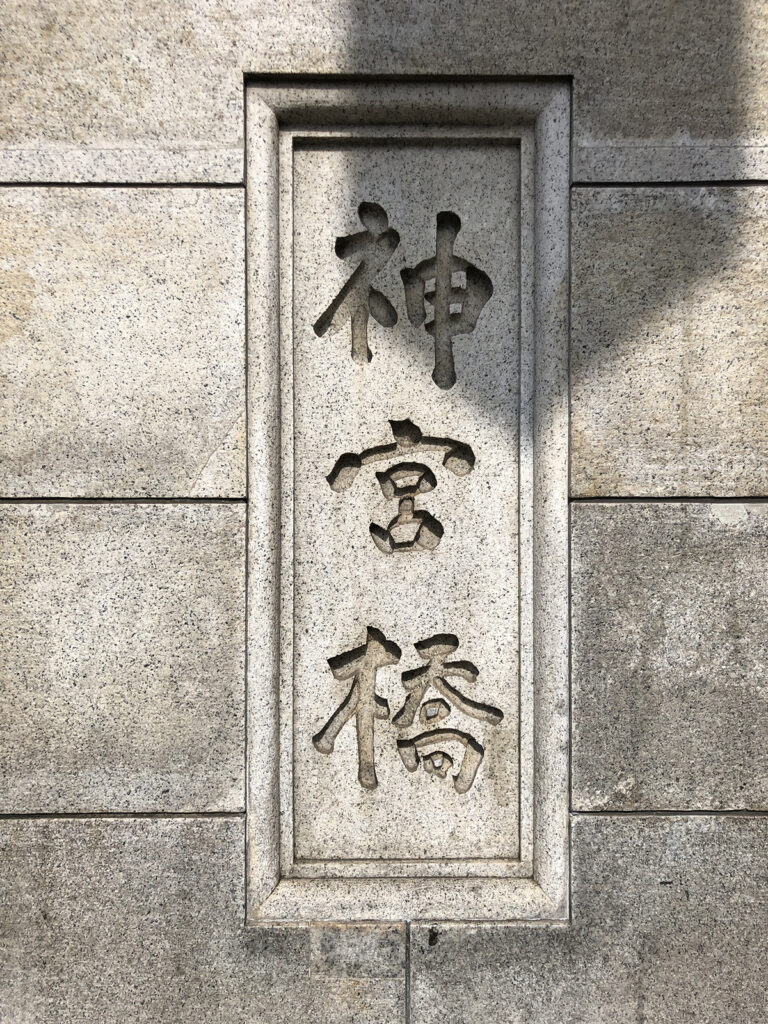

The Meiji Shrine’s Otorii gate
The Meiji Shrine’s Otorii gate is 12 meters high, 17.1 meters wide, 1.2 meters in diameter, and 13 tons in weight, making it the largest wooden Myojin torii gate in Japan. The existing Otorii was rebuilt in 1975.
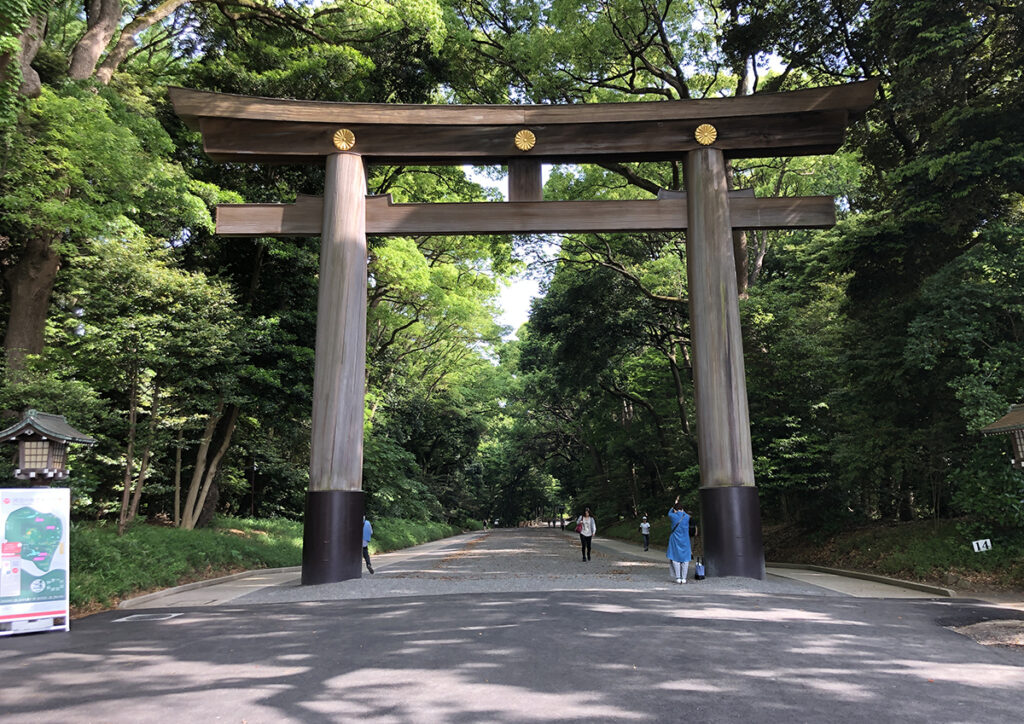

Modern art
When you walk along the approach, you can see Tomokazu Matsuyama’s Wheels of Fortune (2020). This work, which is made by polishing welded stainless steel to a mirror finish, combines deer antler, car wheel and two motifs. The deer, which is said to be sent by the gods, the wheel of the car, which resembles a copper mirror closely related to Shinto, and its organic and artificial shapes are combined to create a contrast. Also pay attention to the contrast between the majestic forest reflected in the mirror surface and the artifacts. It expresses the connection between art and society, taking into account elements such as the modernization of Japan as symbolized by Meiji Shrine.

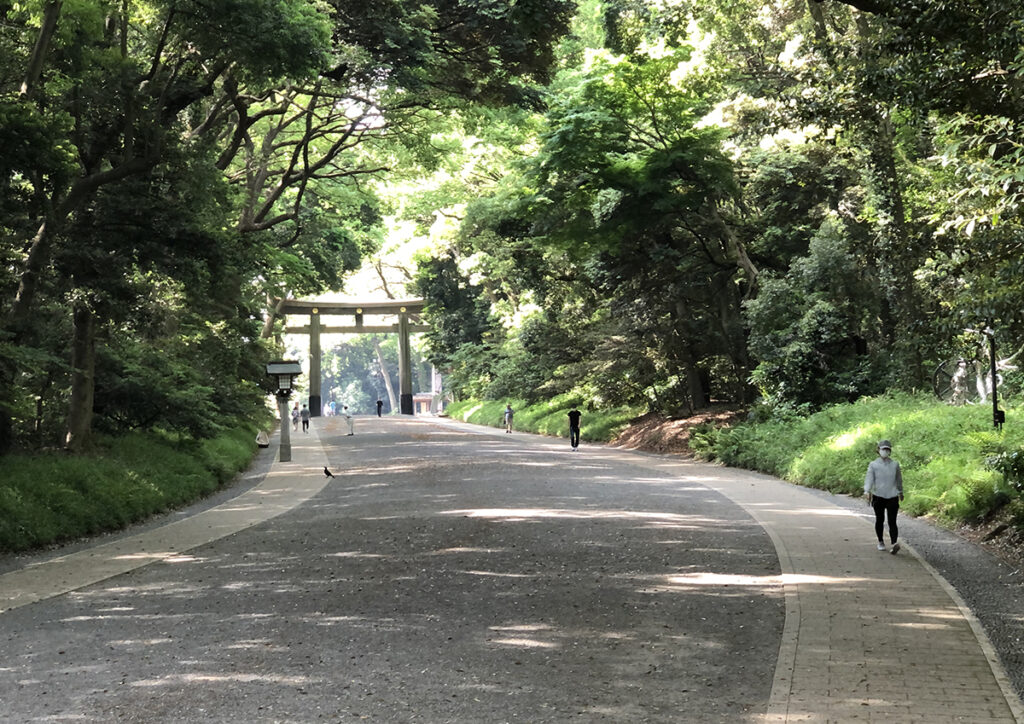
If you go further along the precincts, Kohei Nawa << White Deer (Meiji Jingu) >> (2020) will appear next to the road to the Meiji Shrine Museum that opened in October 2019. Up to now, the latest series in the series has been exhibited at Inujima in the Seto Inland Sea and Oshika Peninsula in Miyagi and Ishinomaki, but it is said to have been finished with mysterious white pearls, which have a different color tone. Nawa described this work as “a powerful view of the sky at Meiji Jingu, connecting various areas of Japan’s current situation, such as Inujima, which is depopulating, and Ishinomaki, which was damaged by the Great East Japan Earthquake, while connecting them. It is a deer. ” After that, I expressed the thoughts I put in the work as follows. “There is a current situation in which the whole world is uneasy or suffering. However, if it becomes a deer who can stop and then feel good and feel positive while thinking again. thinking”.

Meiji Jingu Gyoen
The “Meiji Jingu Gyoen” in the precincts was the garden of the Edo mansion of the Kumamoto clan and Kato clan, including the Kato Kiyomasa, and the Hikone clan and Ii clan in the Edo period. Under the jurisdiction of the Imperial Household Agency in the Meiji era, the iris, which was visited by many people when it was in full bloom in June, was built by the Emperor Meiji. On the slope called Mt. Azalea, the tea room, Sakumotei, is a Japanese-style building that was said to have been a resting place for the Emperor Meiji. There is also a well associated with Kiyomasa Kato, also known as a power spot.
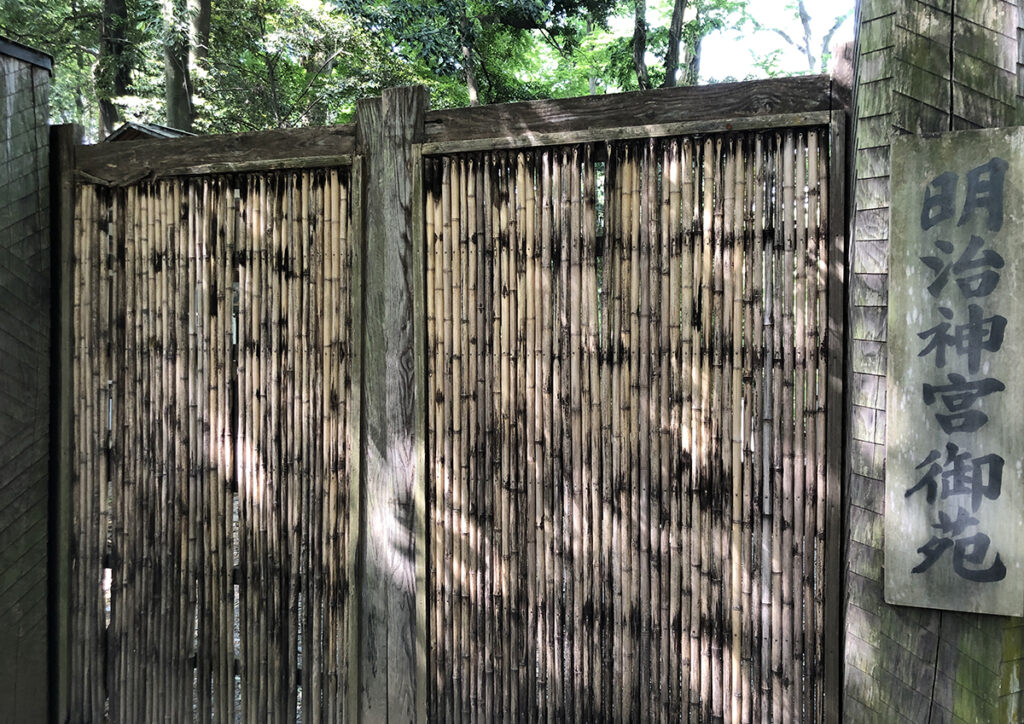
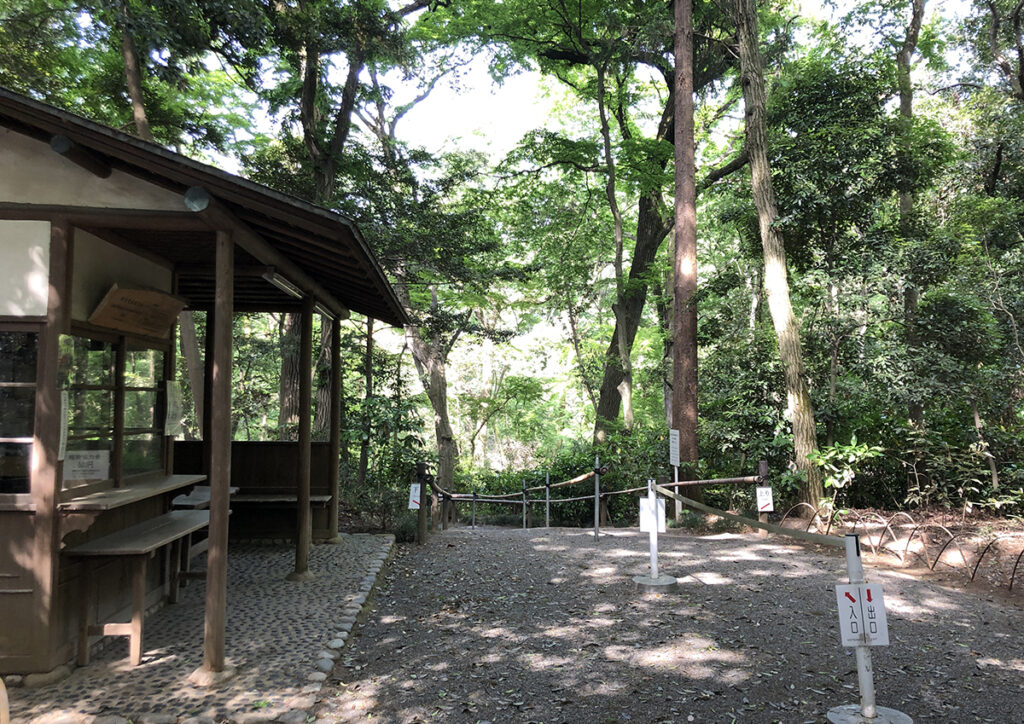

Votive offering
60 wine barrels dedicated by the producers of Burgundy. The domaine’s name and brand are listed on the front of the barrel.
A total of 201 barrels of sake dedicated by sake brewers all over Japan. The kanji representing the name of each sake and the design representing the name are drawn.

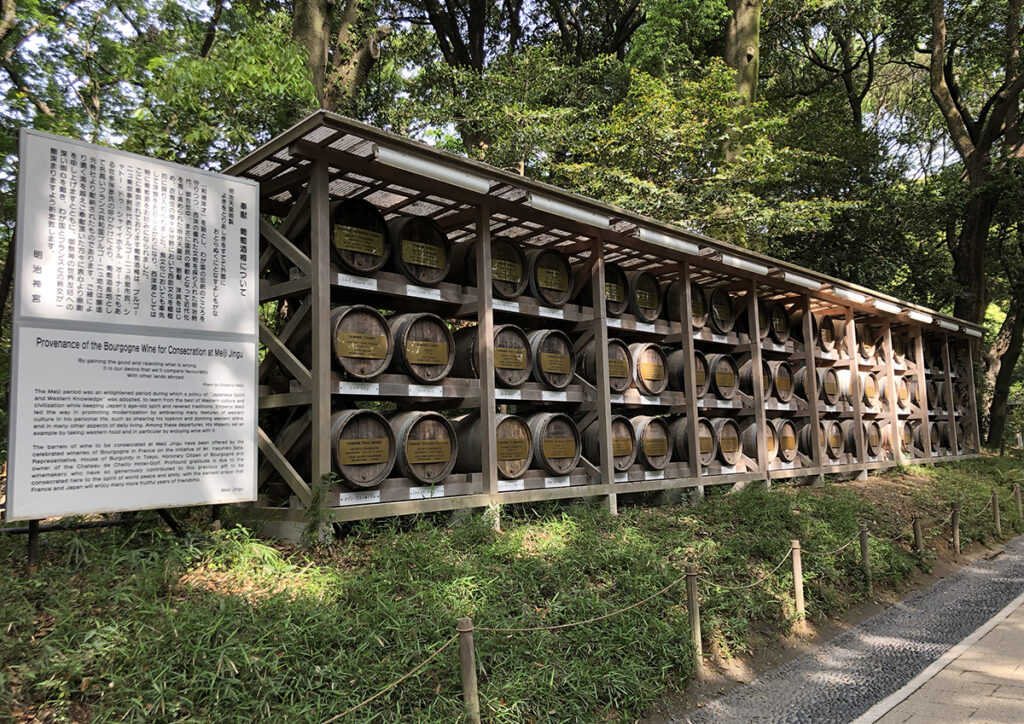
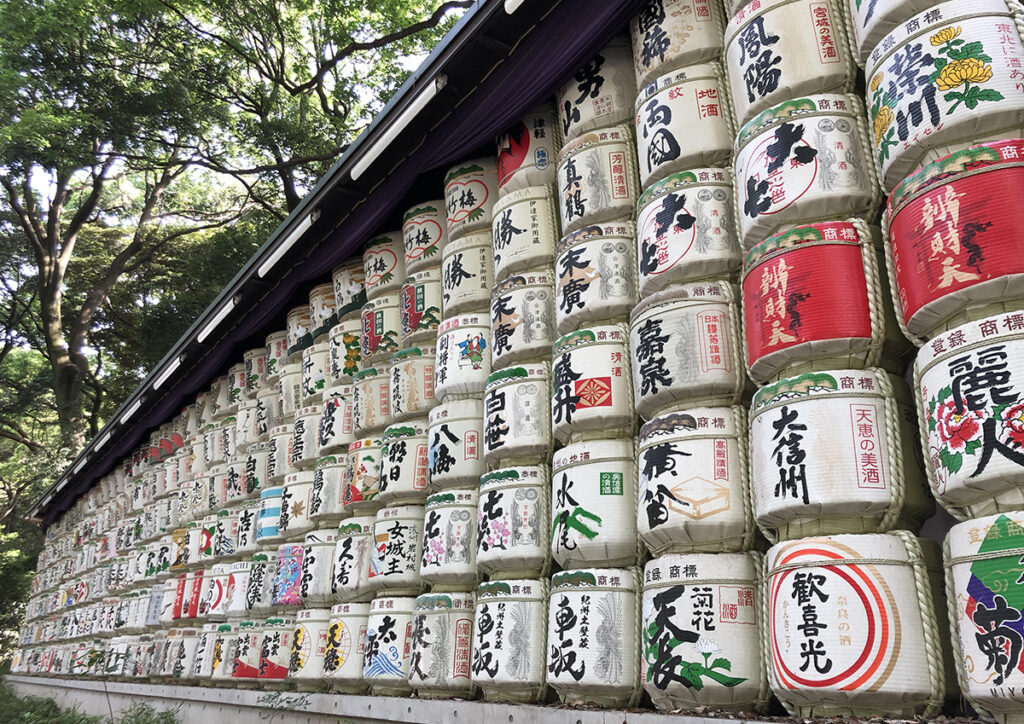
Main hall
The main hall is manufactured by Sangensha. Ryuzo is the most common shrine architectural style in Japan, and the entrance to the building is located on the long side of the building or on the surface parallel to the roof ridge. The roof is warped, and a long curved line extends toward the front entrance for worship. If there are two pillars that are lined up side by side and there is one space between them, it is called Ichinsha Shrine, and if there are four columns and there is three spaces, then it is called Sangen Shrine. The existing main shrine was reconstructed in 1958 after the war struck during the war.
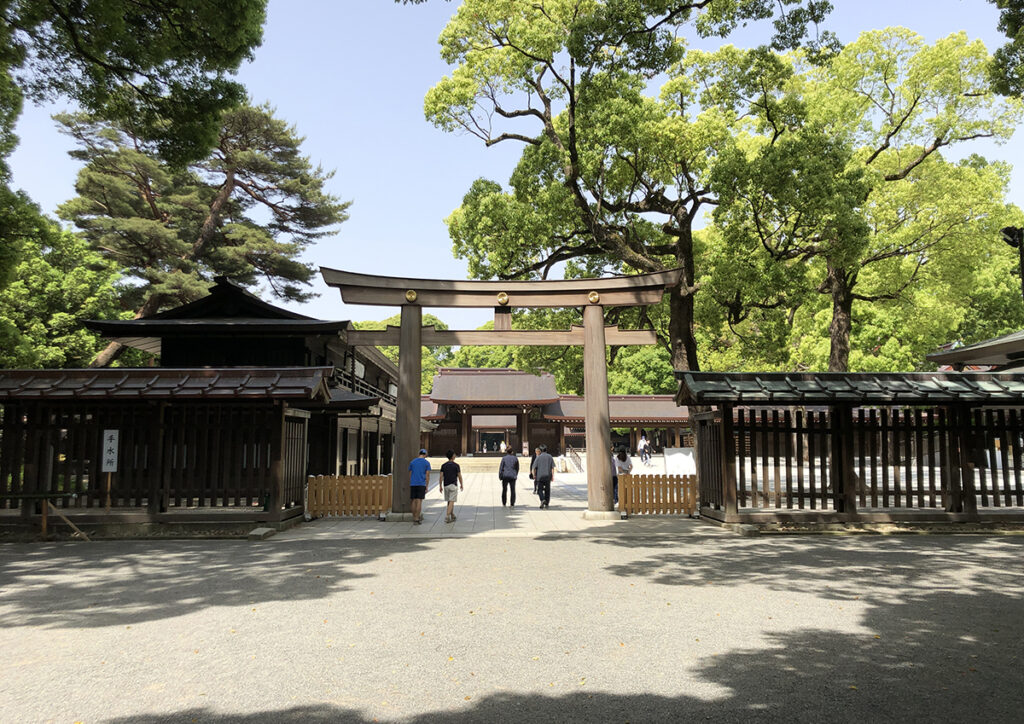
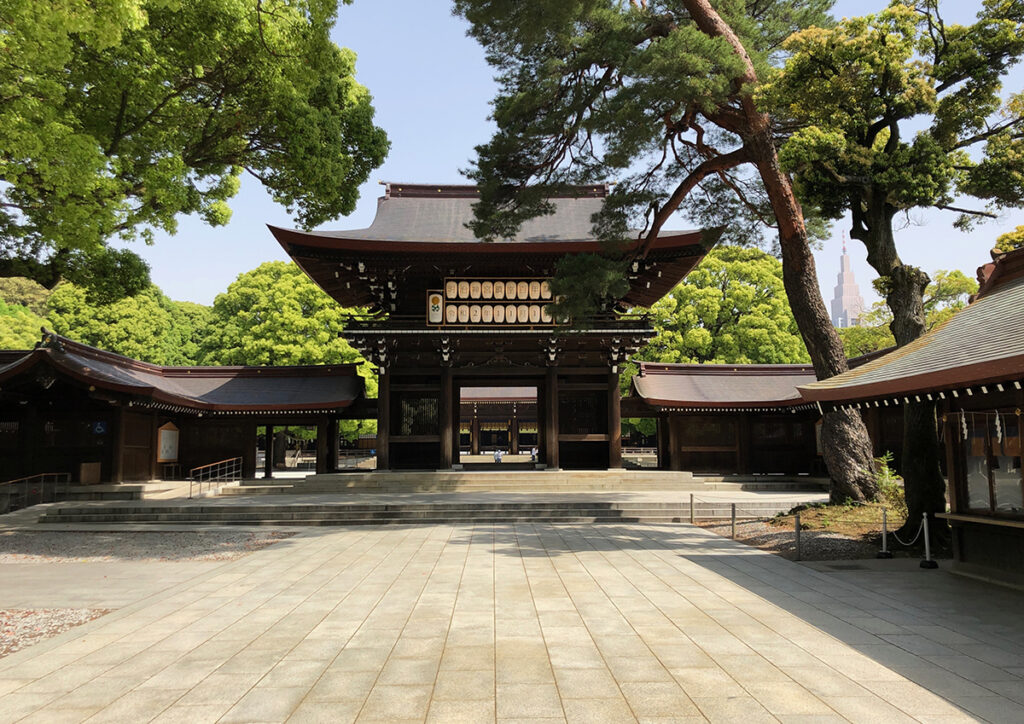
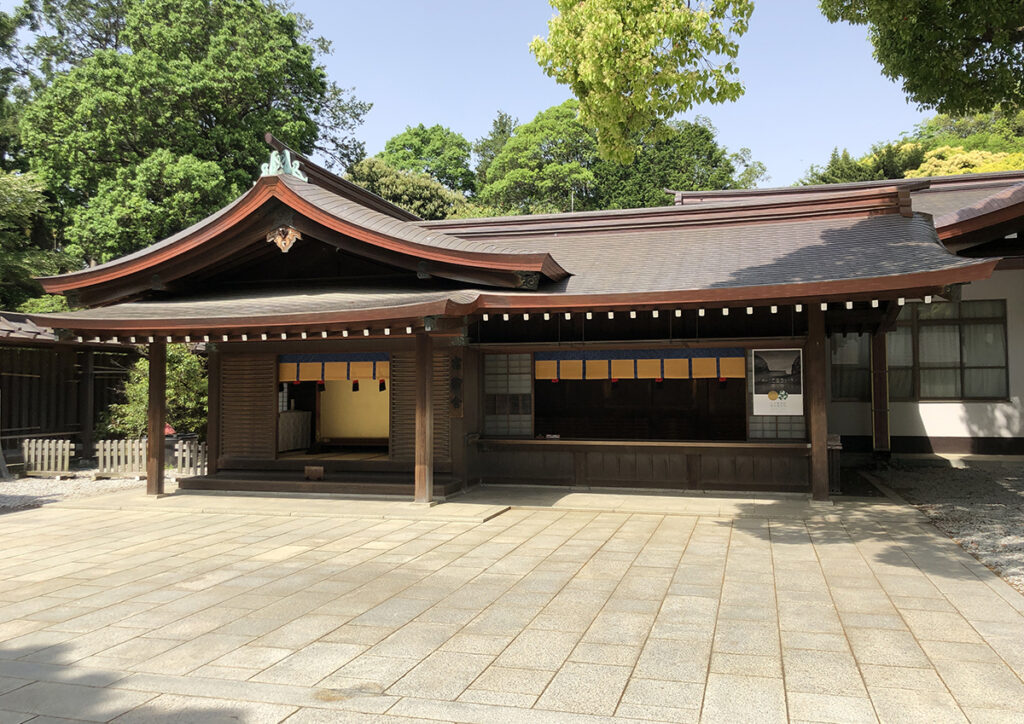
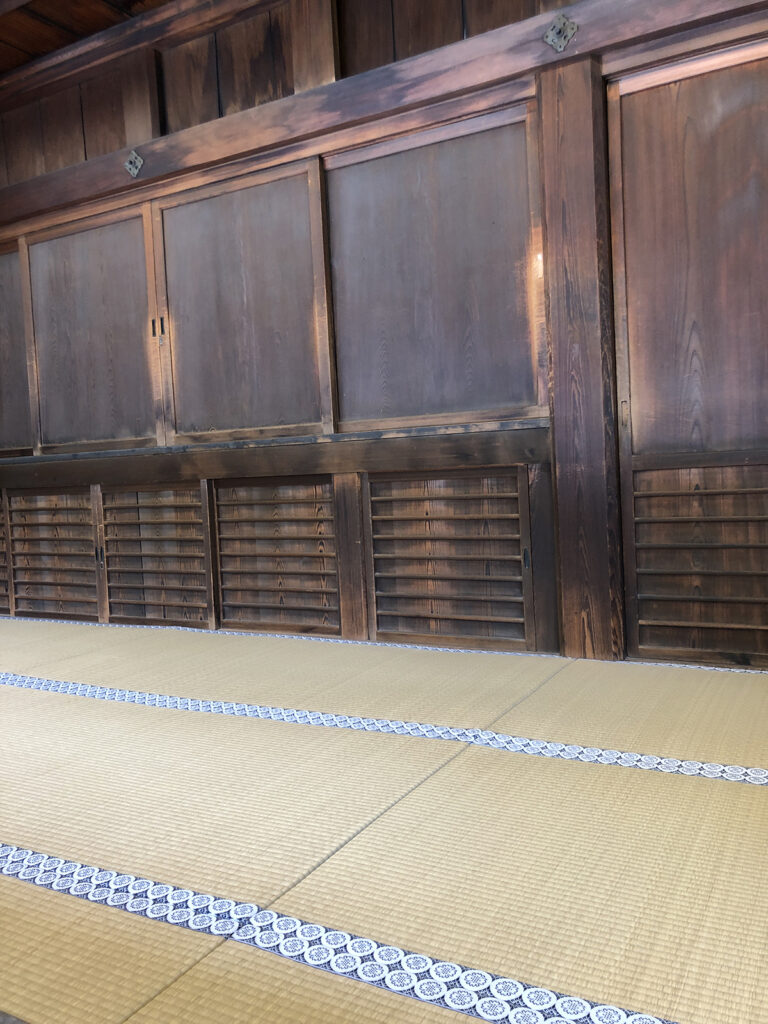
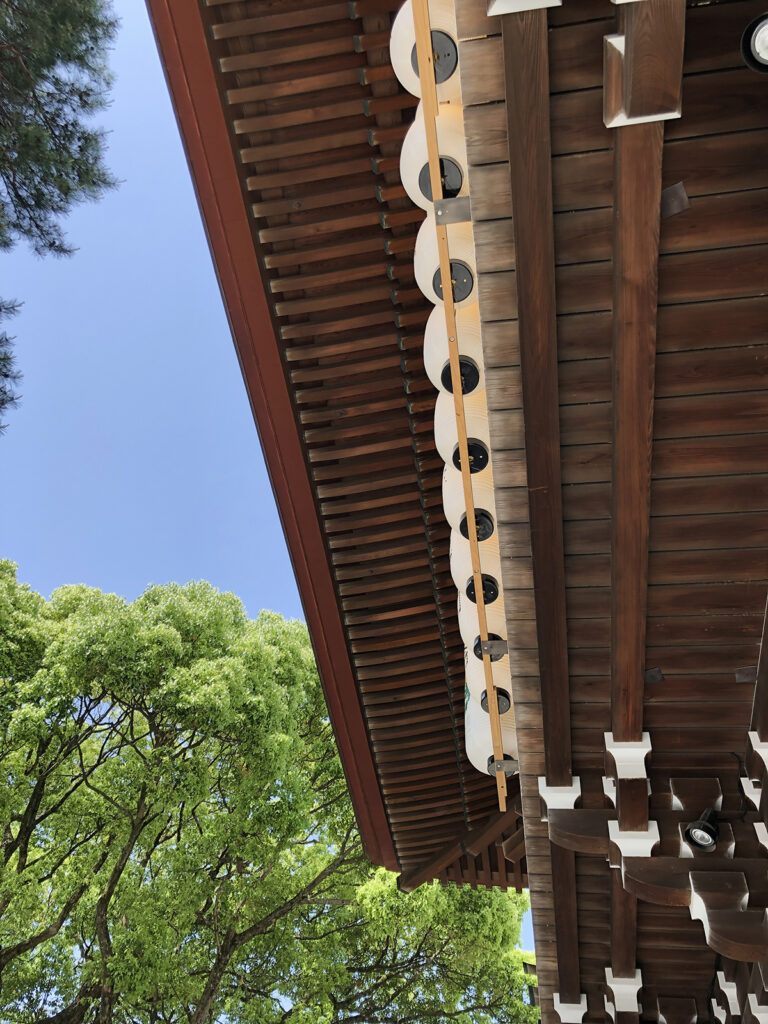
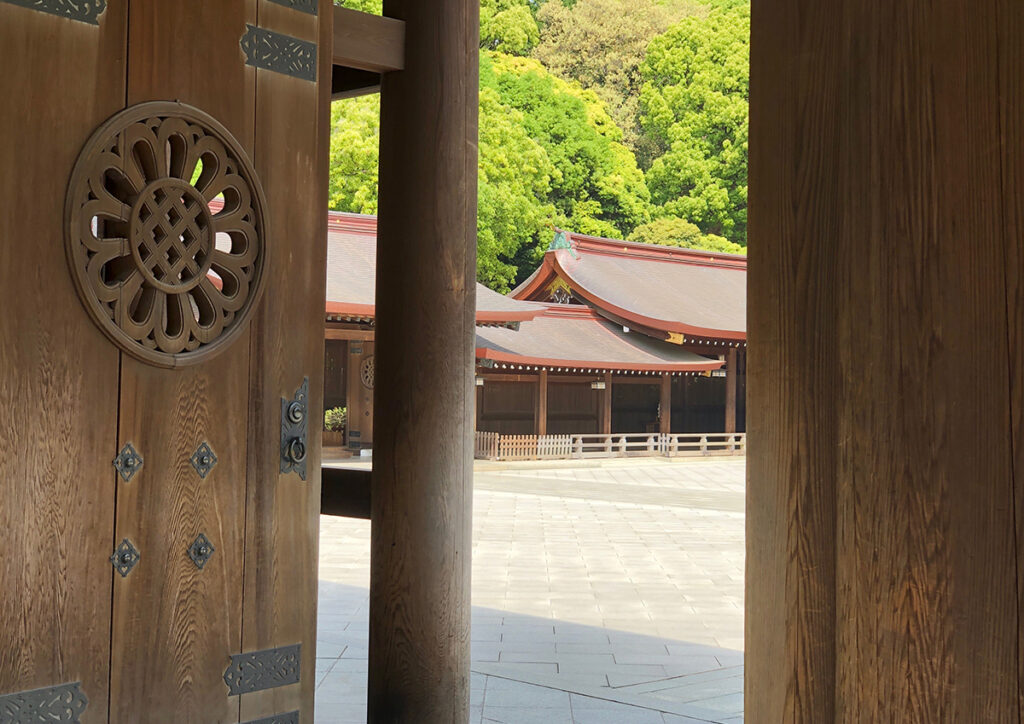

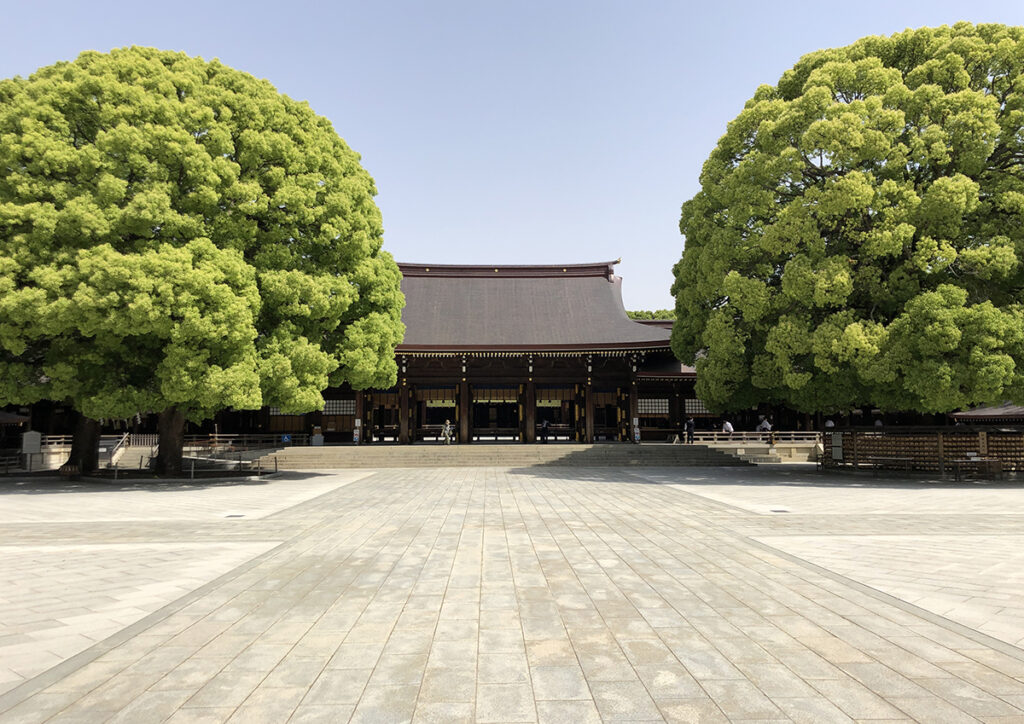
Meoto Kusunoki
Meoto Kusunoki stands in front of the external worship hall and is one of the most famous power spots of Meiji Shrine. It refers to two large trees lined up side by side, and is said to be 100 years old. It is believed that having two trees lined up in a friendly relationship has the effect of increasing love luck. It is said to be particularly effective in maintaining relationships between married couples.
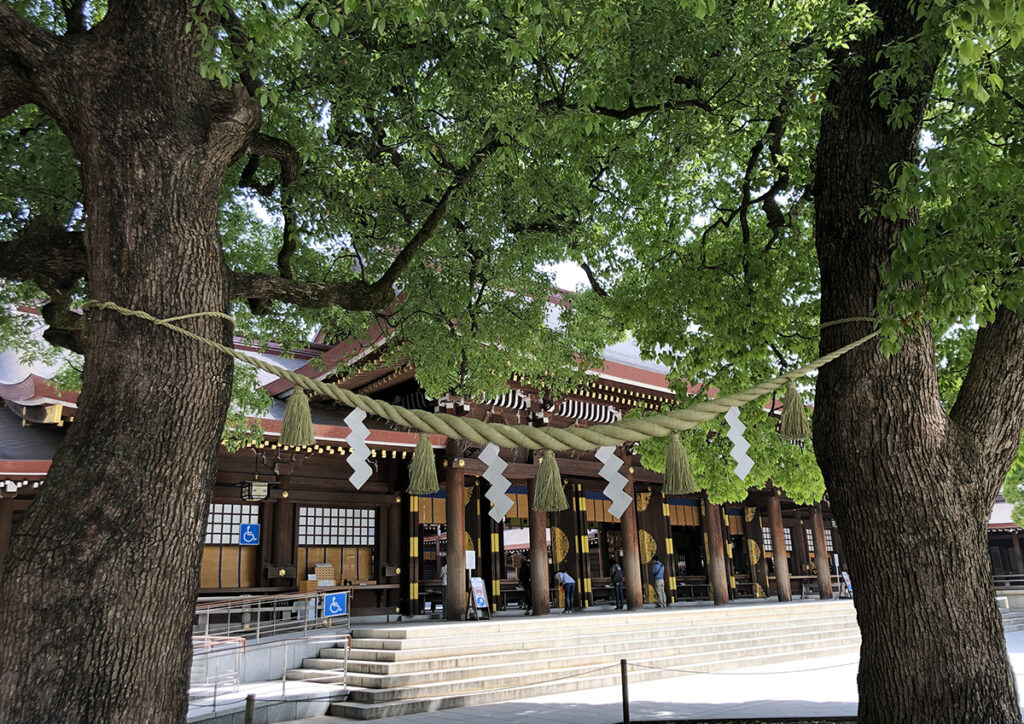
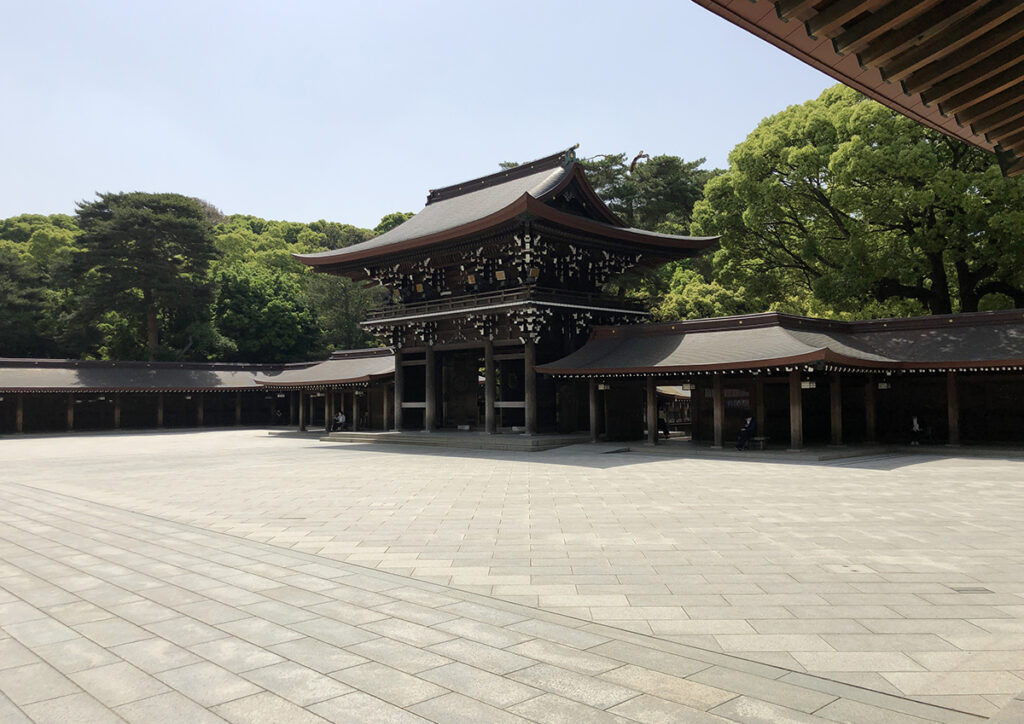
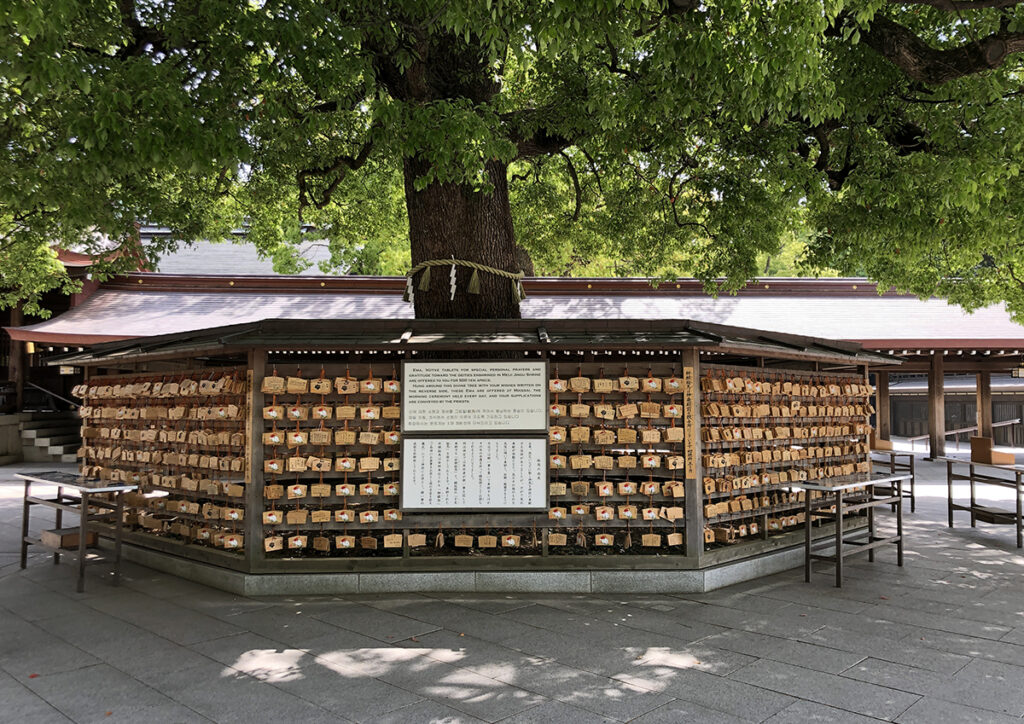
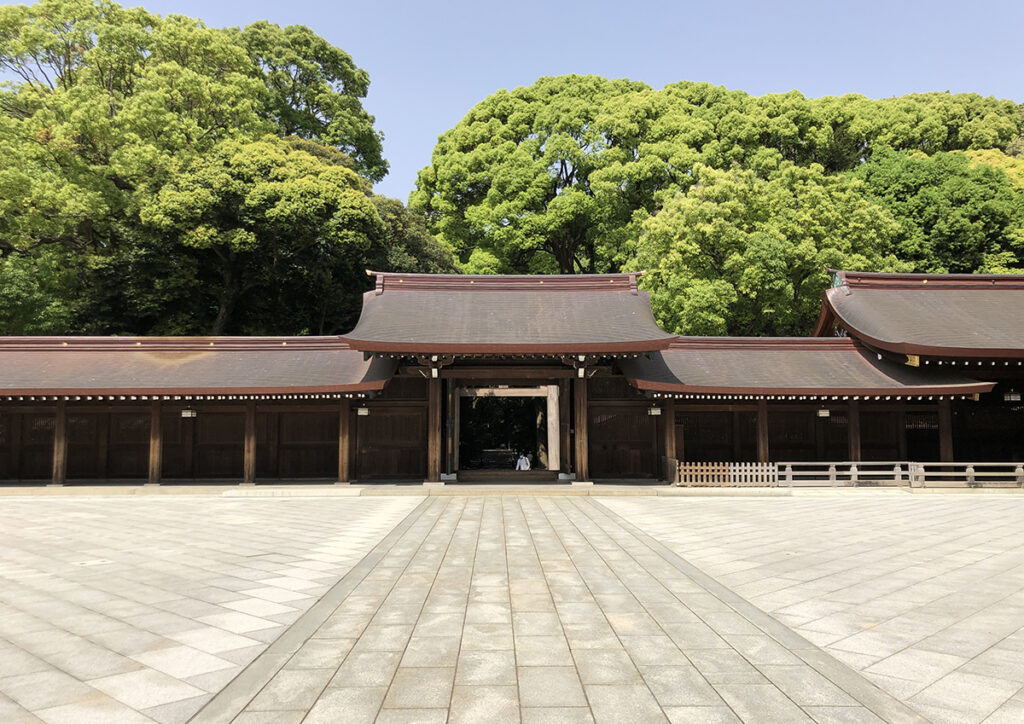
The votive tablets of Meiji Shrine are placed in the prayer votive tablet on the right side facing the main shrine. The votive panel can be stored and taken away.
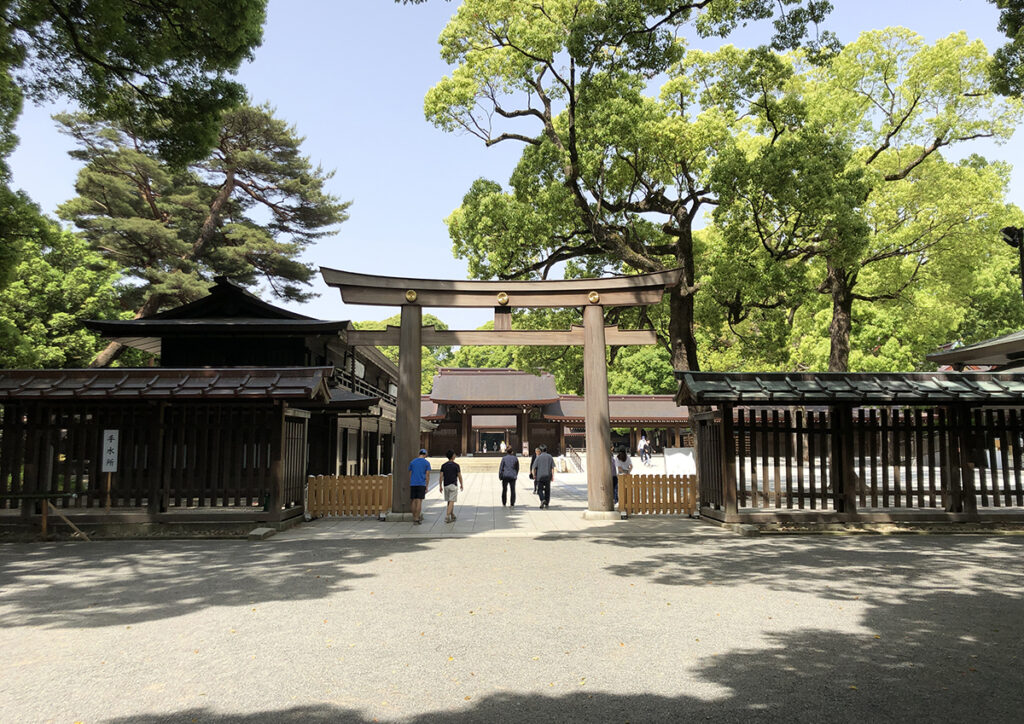
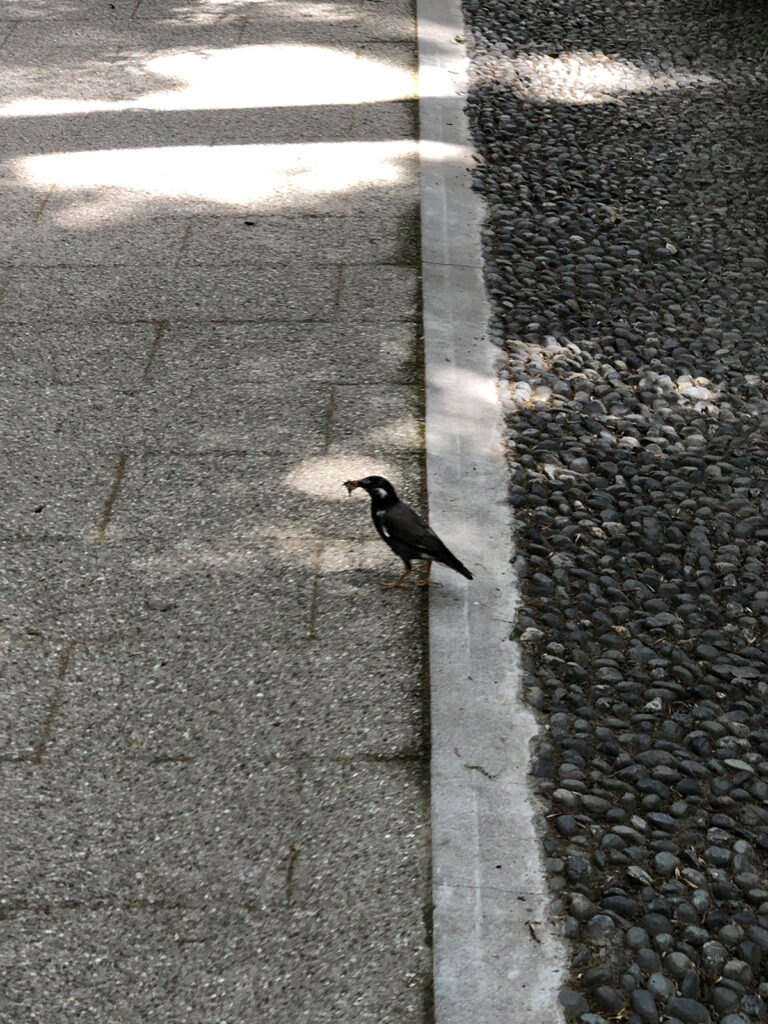
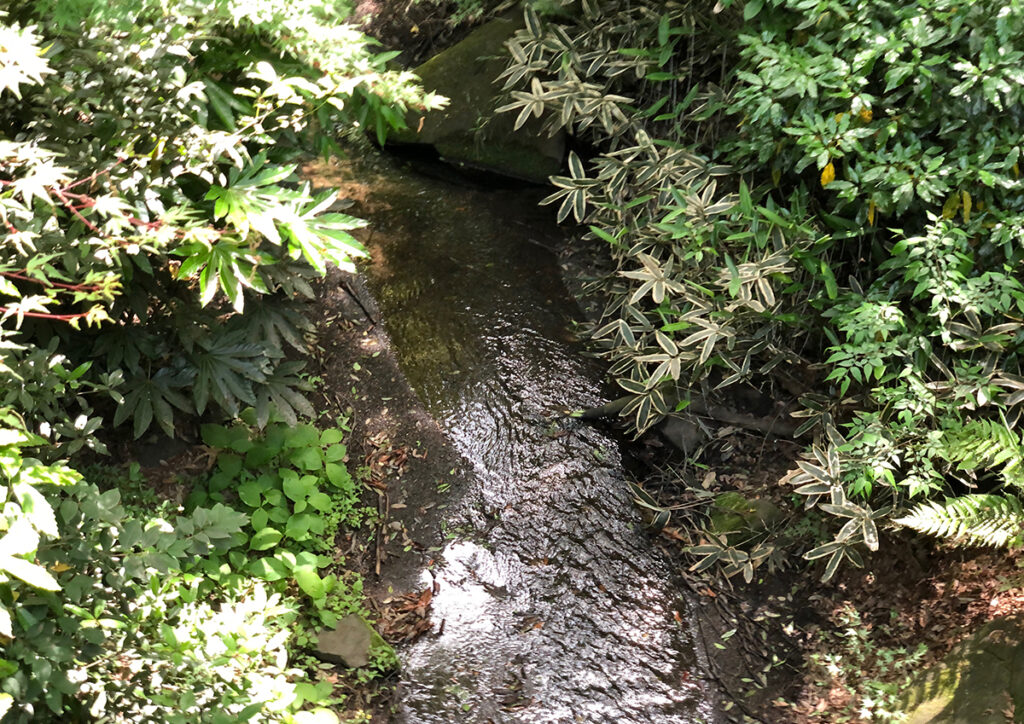
The flow of water from the south pond enters into the forest, but you can catch it from the bridge over the west approach.
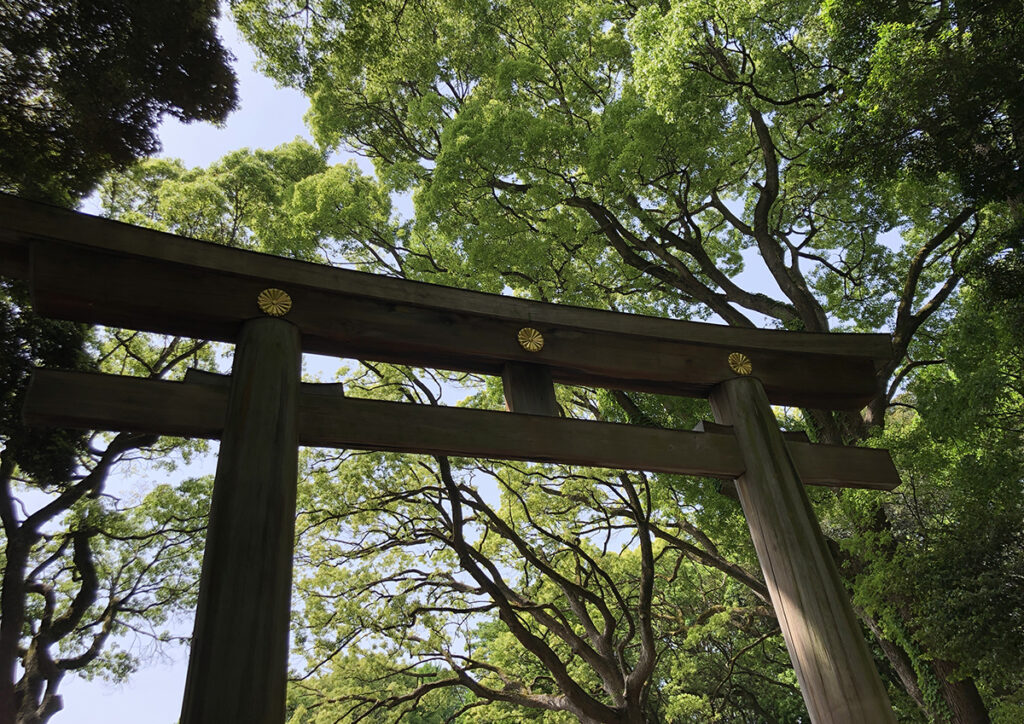
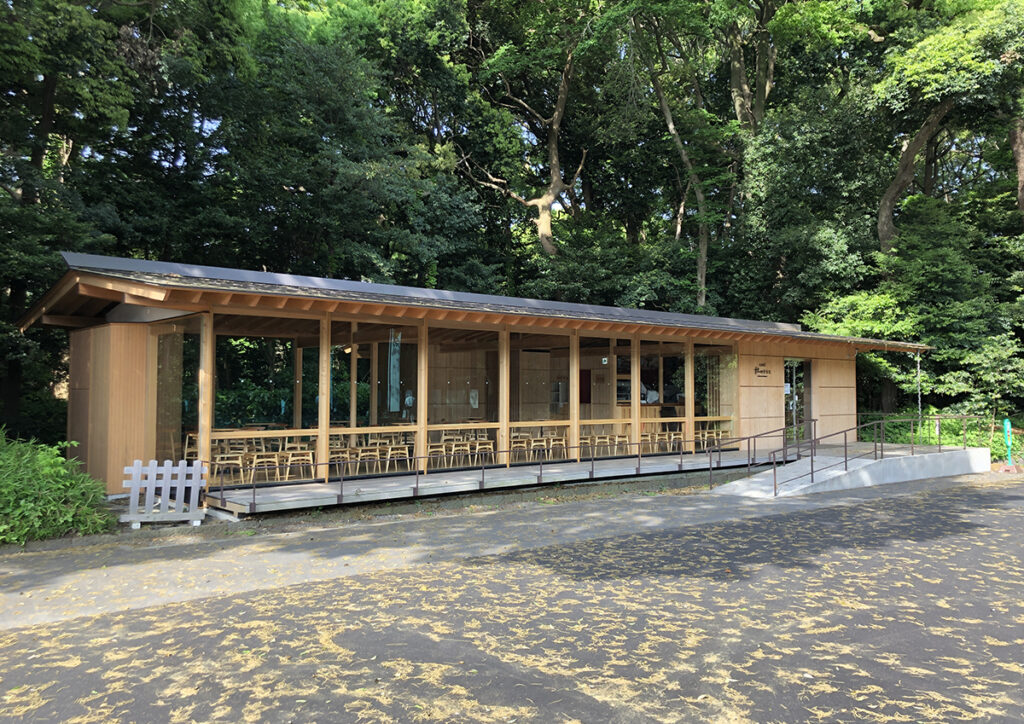
CAFÉ ” Morino Terrace” is a cafe with the theme of reproduction and circulation that integrates with the forest of Meiji Jingu, and it is a cafe that is suitable for looking back on the peaceful time spent in the forest. is.
Access to Meiji Jingu Shrine
Address:1-1 Yoyogikamizonocho, Shibuya City, Tokyo 151-8557
TEL: 03-3379-5511
Parking around Meiji Jingu Shrine
Meiji Jingu Shrine Official Website
Official site:https://www.meijijingu.or.jp/
